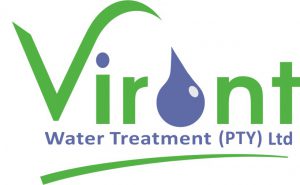Disinfection
According to the World Health Organization (WHO), approximately 1.2 billion people lack access to safe drinking water and more than double this number do not have access to adequate sanitation. The WHO estimates that as a result, 3.4 million people, most of which are children, die every year from water-borne diseases. The disinfection of water for safe consumption only commenced on a large scale in the early twentieth century and currently almost 4 billion people worldwide enjoy the benefits that water disinfection brings by helping to eliminate life threatening water-borne diseases such as cholera, typhoid fever, dysentery and hepatitis A. There are other benefits to having access to clean water. In many parts of Africa it is not uncommon for women and girls to spend as much as 3 hours a day fetching water, an expenditure of calories greater than one-third of their daily food intake (United Nations 2002). The task of keeping the home supplied with drinking water is often so laborious and time consuming that it can constitute the most significant single obstacle standing in the way of a child’s education. A reliable supply of water is also necessary for almost all economic development.
The treatment and distribution of water for safe use can be considered to be one of mankind’s greatest achievements and has brought about a substantial increase in the life expectancy and quality of life for those who enjoy its benefits. Our bodies are 67% water and the quality of the water we ingest has a direct and immediate impact on our wellbeing. The United Nations has recognized the critical link between safe water and sustainable development. At the 2002 World Summit on Sustainable Development (WSSD) in Johannesburg, the UN reaffirmed its goal to reduce by one-half the proportion of people without access to safe water by 2015. The WSSD also adopted a comparable goal for improving access to basic sanitation.
The chemical process of disinfection whereby disease-causing microorganisms are killed or rendered harmless by inactivating them is the basis of providing safe water for human use. Nearly all current water disinfection systems use some type of chlorine-based process, either by itself or together with other disinfectants (see below). Typically, chlorine is added to drinking water as elemental chlorine (chlorine gas), sodium hypochlorite solution or dry calcium hypochlorite whereby “free chlorine” is formed in the water which destroys the disease-causing pathogenic organisms. E. coli is a bacterium that is invariably found in the human gut and is a good marker organism to indicate the effectiveness of water disinfection in that it is easily identified and the extent of its presence usually bears a direct correlation with the likelihood of other pathogenic organisms being present. Some pathogens, however, such as Cryptosporidium, have started to prove resistant to chlorination and where they appear in water supplies other combinations of disinfection in addition to chlorination are utilized.
While the main aim of municipal water treatment is to produce biologically safe, i.e. disinfected, water that is also chemically safe for human consumption , other factors that have to be considered include: the water should have a reasonable taste and have no noxious odours; there should be low turbidity and not much colour in the water and it should be chemical stable to prevent corrosive to components of the water distribution network and not produce scale. Generally, although groundwater will very often have more minerals, such as iron, manganese, calcium and/or magnesium requiring removal to improve its flavour, get rid of colour and make is more acceptable to use when heated and/or aerated so that it does not stain and cause scaling, ground water is generally safer to drink from a biological point of view. This is because it has typically been filtered as it percolates through layers of soil material that remove organic and biological matter. Surface water, on the other hand, very often contains much organic and mineral matter, including pathogenic parasites such as Cryptosporidium parvum and Giardia lamblia. Another challenge is that while water is being stored prior to consumption or during distribution to consumers the water is vulnerable to contamination by microbiological material and the development of algal and bacterial slimes on pipe and tank surfaces
Another important consideration when disinfecting water with chemicals is the control of disinfection byproducts that are chemically formed unintentionally when chlorine and other disinfectants react with organic material in the water. Chlorination of water can form byproducts known as trihalomethanes (THMs) such as chloroform. Although there is still much debate about the seriousness of consumption of THMs to the human body, in particular how carcinogenic they might be, it is considered good practice to reduce levels of THMs by eliminating as much organic matter as practically and economically as possible from the water prior its disinfection with chemicals.
